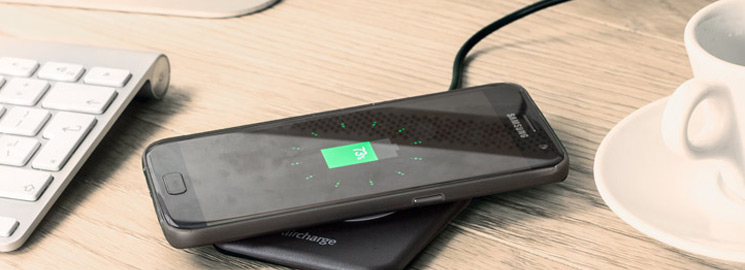Broken wires, expensive adapters and the danger of cheap knock-off power cables are a common part of our digital life. Wouldn’t it be convenient if you could charge your mobile devices without the hassle and worry of all the cables? Well it looks like you now can. From smartphones, to hand-held industrial devices and heavy-duty equipment applications wireless charging provides a convenient, safe, and reliable way to charge and power millions of electrical devices at home, in the workplace and in industry. With the recent introduction of Apple’s new iPhone 8 and upcoming iPhone X (10) wireless phone charging seems to be the new trending topic in our mobile world.
To start off with, what is wireless charging and how does it work?
As of right now, wireless charging works on the principle that you still need to lay your phone down so that it makes contact with a charging base station or mat.
Wireless charging works on the principle of electromagnetic induction. Coils of wire in the base station (the charging plate) create a magnetic field as the current passes through. This field can induce an electrical current in an adjacent coil of wire without actually touching it (which is the batteries in the phone). If this wire is part of a battery charging circuit, then you have wireless charging.
As with any technology, there are a number of systems looking to gain dominance in this industry and become ‘the standard’. For wireless charging that pretty much means the Qi standard (which is driven by the Wireless Power Consortium) From portable bluetooth speakers and smartwatches, to a range of Android and now Apple powered smartphones, wireless Qi charging seems to be the standard.
So, what would be the advantages of this type of technology?
Convenience: The number one benefit of having wireless charging is that you will never have to deal with cords again. It leaves the need of messy cords and makes it much simpler by just letting you drop your phone at the charging station. Additionally, you will not have to worry about where you left your cord and the need for different chargers. With wireless chargers, you can charge all your phones simultaneously.
More Cost Effective and Safer:By eliminating the use of physical connectors and cables you don’t have to worry about the danger of frayed or broken cables and the cost of replacing them.
Integration: One of the best advantages of certain wireless chargers is that it can integrate with almost all cell phones, no matter the shape or size of its charging socket. And also, there are certain devices other than smartphones which can be charged using the wireless charger.
Are the drawbacks to this technology?
Performance: One of the reasons why wireless charging is not fully integrated is that it still lacks efficiency compared to traditional chargers. At this point a wired charger will charge your device faster than wireless base stations.
Mobility: It is the signals transmitted between your mobile phones and the charger which are wireless, but you still need to plug the charging station to a wall. So, it makes the charging stations non-portable. Additionally, you must keep the device on the pad at all times and it cannot be moved. This obviously makes it difficult to operate the phone while it is being charged.
Any predictions as to future implications of this technology?
I would think once this technology matures you will see it built into your furniture so all you have to do is lay your device onto a kitchen or tv room table for it to begin charging. Most coffee shops will have it built into and further out, I’d say you might see wireless charging taking place on your device without you having to place it down on anything where the base station could be anywhere in the house.


Leave a Reply